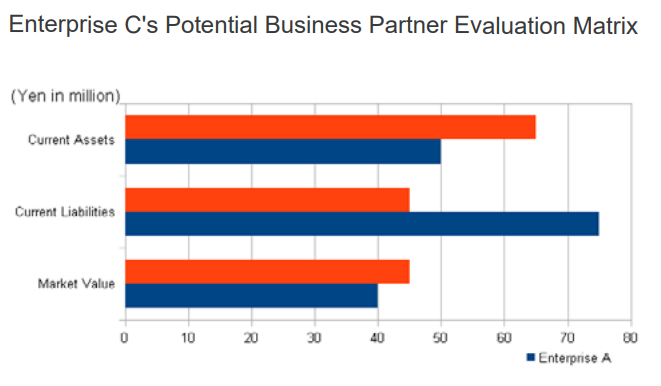LESSON GOAL
Let’s check our lesson goal.
In this material, you will learn how to evaluate potential partnerships and important vocabulary words.
In this material, you will learn how to evaluate potential partnerships and important vocabulary words.
このレッスンのゴールを確認しましょう。
この教材では、潜在的なパートナーシップと評価と関連する言葉を学びます。
この教材では、潜在的なパートナーシップと評価と関連する言葉を学びます。
PART A_1
Study the following words and expressions together with their definitions with your tutor.
Then, construct your own sentences using each word/expression on the list.
Then, construct your own sentences using each word/expression on the list.
PART A_2
lucrative
profitable
Sample Sentence:
factor in
to include a particular amount when calculating something
Sample Sentence:
affiliation
the state of being associated
Sample Sentence:
synergy
the collaboration of two entities to produce an effect greater than the sum of their individual effects
Sample Sentence:
test the waters
to make an initial assessment
Sample Sentence:
PART B_1
Listen to your tutor as he/she reads the text.
Study and interpret the given data. Then, discuss with your tutor.
Study and interpret the given data. Then, discuss with your tutor.
PART B_2
Assess and compare the performance of your company’s (enterprise C) potential partners with the given data.
Make sure to follow the format below in your explanation.
• introduce the general idea
• enumerate main points
• make a conclusion
• enumerate main points
• make a conclusion

PART B_3
PART C_1
Read the passage below silently. Then, discuss with your tutor.
In your discussion, talk about how you would deal with the situation.
In your discussion, talk about how you would deal with the situation.
PART C_2
Based on the data shown in the graph in Activity 2, evaluate the two enterprises. Choose the enterprise that will make a better business partner with Enterprise C, then justify your decision.
PART C_3
PART C_4
PART D_1
Read the text silently. Express your opinion on each statement in 4-5 sentences.
PART D_2
Willingness to restructure one’s business should be taken into consideration.
Answer:
Partnerships should result in brand synergy with less cost.
Answer:
It should not be a factor in the possibility of compromising lucrativeness.
Answer:
REVIEW AND FEEDBACK
Now, let us review the things that you learned in this lesson.
ではこのレッスンで学んだことを振り返りましょう。
(Please give a short feedback in how your student did on your class.)
| Grammar 文法 |
Pronunciation 発音 | Vocabulary 単語 |
Comprehension 理解 |
|
|---|---|---|---|---|
 GOOD GOOD |
文法の誤りはほとんどなく、完全な文章で話すことができる | ほとんどの単語をはっきりと正しく発音することができる | 習った表現を適切に使うことができる | 文章を理解し、質問に正しく答えることができる |
 FAIR |
文法の誤りはあるが、完全な文章で話すことができる | 発音の練習が必要な言葉がいくつかある | たまにミスはあるが、習った表現を適切に使うことができる | 文章を完全に理解するのは難しく、質問に正しく答えられないときもある |
 POOR |
文章で話すのは難しく、単語だけで話すことができる | 発音の練習が必要である | 習った単語と表現を少しだけ使うことができる | 文章を理解するのは難しく、質問に答えるのは難しい |
レッスン教材に関するアンケートのお願い
レッスン教材の改善・拡充を図ることを目的とし、アンケートを実施しております。
以下のURLからアンケートにお答えいただき、 ご意見・ご要望をお聞かせください。
アンケートはこちら